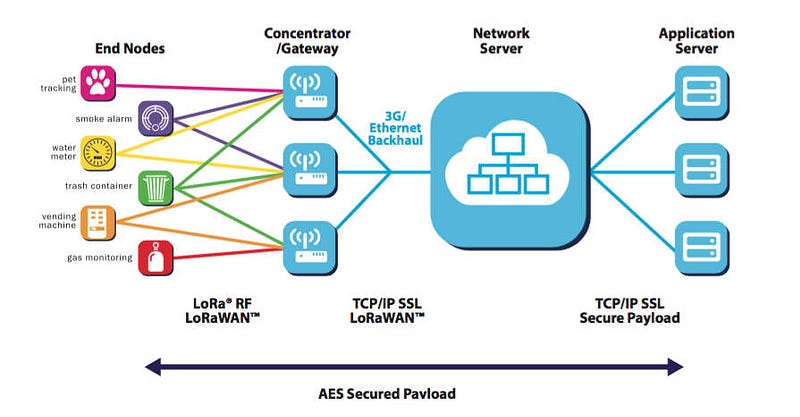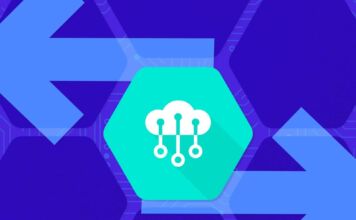
LoRa + LoRaWAN = LPWAN
A telecommunication system, LPWAN technologies included, is composed of several components. The physical (PHY) layer, at the hardware level, defines the electrical specifications for data transfer. The data link layer is responsible for detecting changes in the PHY layer and establishing a protocol to send data.
While LoRa is often misused to describe the entire LPWAN communication system, strictly speaking, LoRa is a proprietary modulation format owned by Semtech. SX1272 and SX1276 LoRa chips use a modulation technique called chirp spread spectrum (CSS) to make up the physical (PHY) layer of the technology stack.
LoRaWAN is an open standard that defines the communication protocol for LPWAN technology based on a LoRa chip. LoRaWAN defines the media access control (MAC) in the data link layer and is maintained by the LoRa Alliance. This distinction between LoRa and LoRaWAN is important because other companies such as Link Labs use a proprietary MAC layer on top of a LoRa chip to create a better performing, hybrid design — called Symphony Link in Link Labs’ case.
So in summary,
- LoRa = PHY Layer
- LoRaWAN or Symphony Link = MAC Layer
- LoRa + LoRaWAN = LPWAN technology stack

Star Topology
Many websites list LoRaWAN as a star or star-on-star topology and note that it is better than a mesh network for preserving battery power and increasing the communication range.

A star topology describes the network architecture: messages are relayed to a central server via gateways. Each end node transmits the data to multiple gateways. The gateway will then forward the data to the network server where redundancy detection, security checks, and message scheduling are performed.
This design choice has the following implications:
● Easier asset tracking: Since the end node sends data to multiple gateways, there is no need for gateway-to-gateway communication. This simplifies the logic for asset tracking applications where the end nodes are mobile.
● Better for public networks: Having a central server mitigating collision issues means that LoRaWAN might not be better for public networks than private/customer-deployed networks.

Three Device Classes
LoRaWAN actually has three classes to cover a wide range of applications. The intended usage for each of the device classes are summarized below by SAGEMCOM:

Business Model
SigFox and LoRa/LoRaWAN have completely different business models. SigFox is not an open-protocol but allows vendors (STMicroelectronic, Texas Instruments, Atmel) to manufacture SigFox-compatible radios. SigFox’s focus is on deploying its own network, giving away cheap hardware, and selling its network as a service.
LoRa/LoRaWAN, on the other hand, is an open-protocol, but users are limited to Semtech’s LoRa chips. The open standard leads to flexibility and custom options (e.g. Symphony Link), but slower development.
Both networks claim that more than 100 US cities are covered by its network. With cellular IoT options set to commercialize in 2017, it will be interesting to monitor which business model wins out in the end.
If you want a more technical overview of LoRa/LoRaWAN, check out our white papers.




 Contact Company
Contact Company





 Latest IoT News
Latest IoT News









